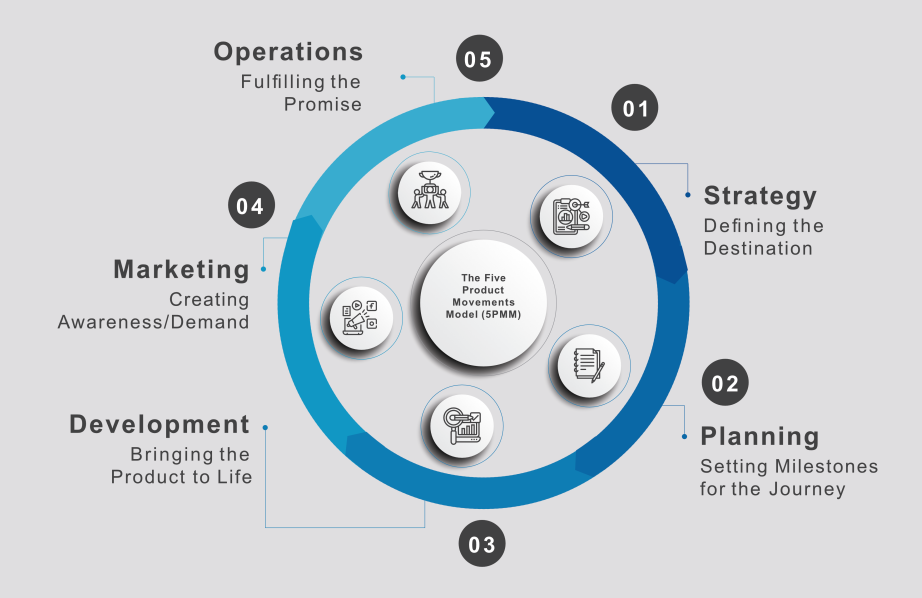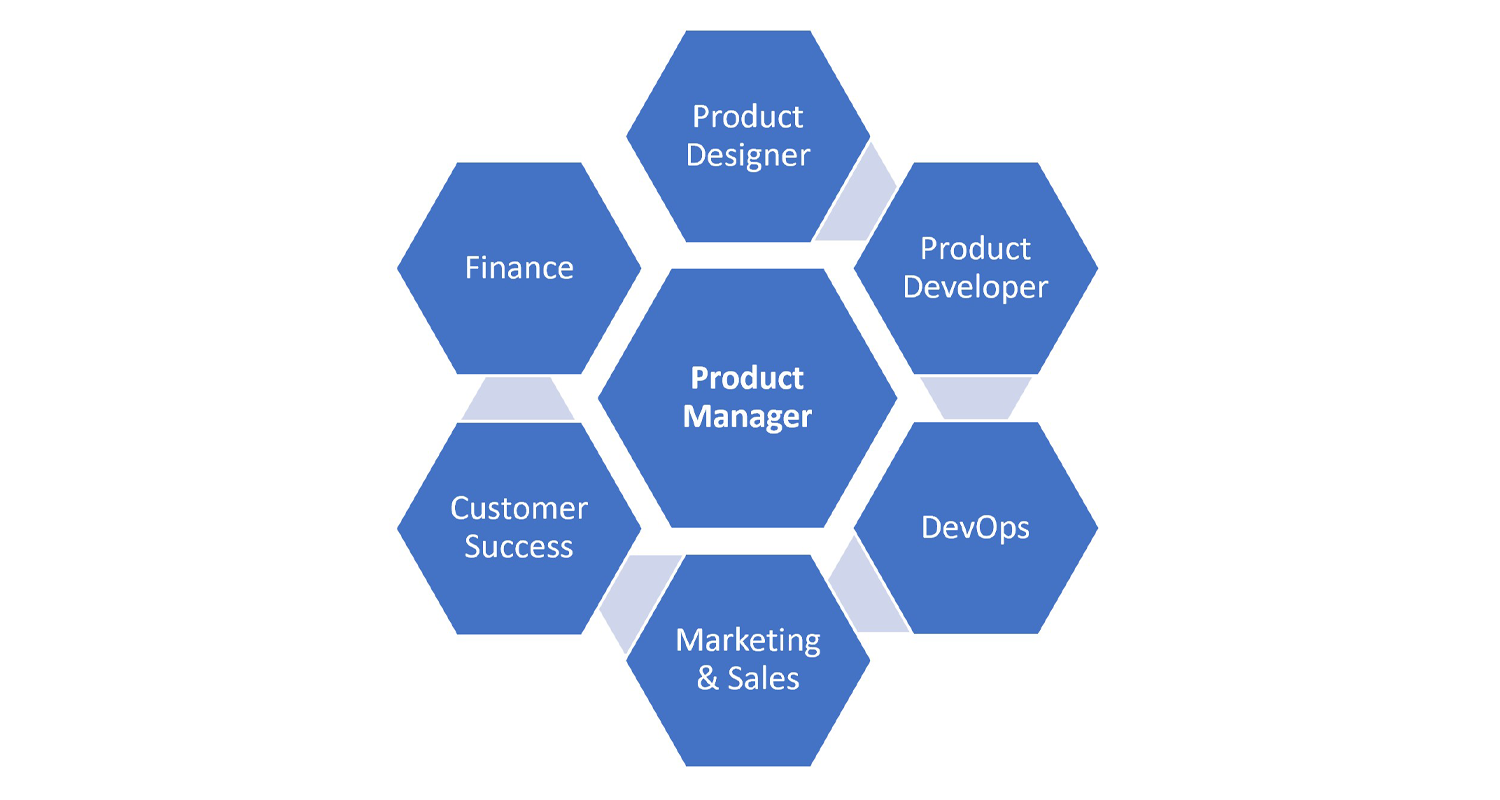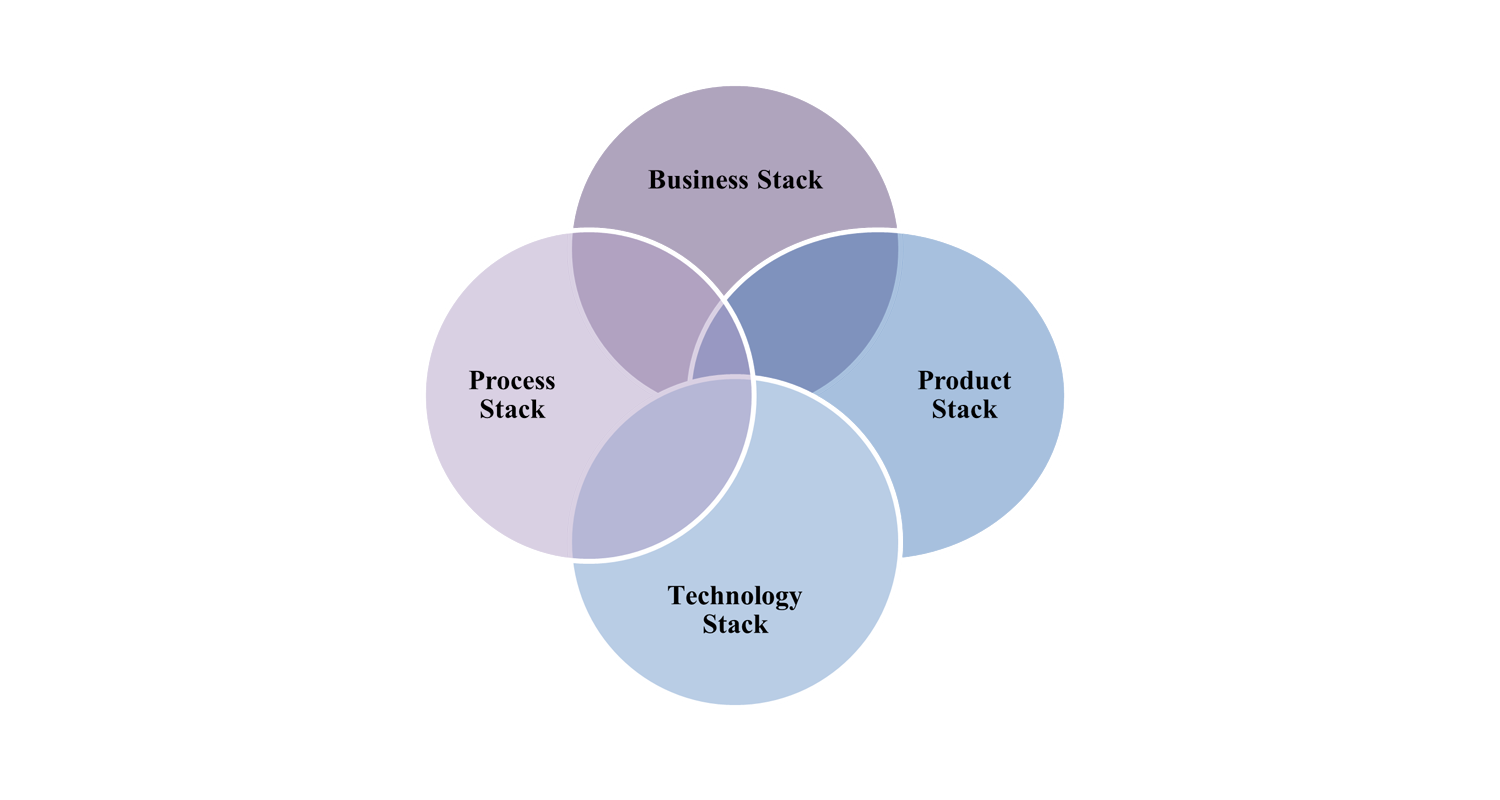1. Introduction
Over the past decade, I have worked extensively with many B2B enterprise software companies. My role has principally focused on the individual and collective performance of the product management and the development management functions. This has included the assessment, formation, development, and re-engineering of the product management function. The clients have ranged from large, publicly-held enterprise software companies with a heritage on-premise customer base migrating to SaaS [ref] to pure-play SaaS start-ups.
My experience has demonstrated that the SaaS model has dramatically altered the role and practices of product management. Key aspects of the SaaS model that impact product management include:
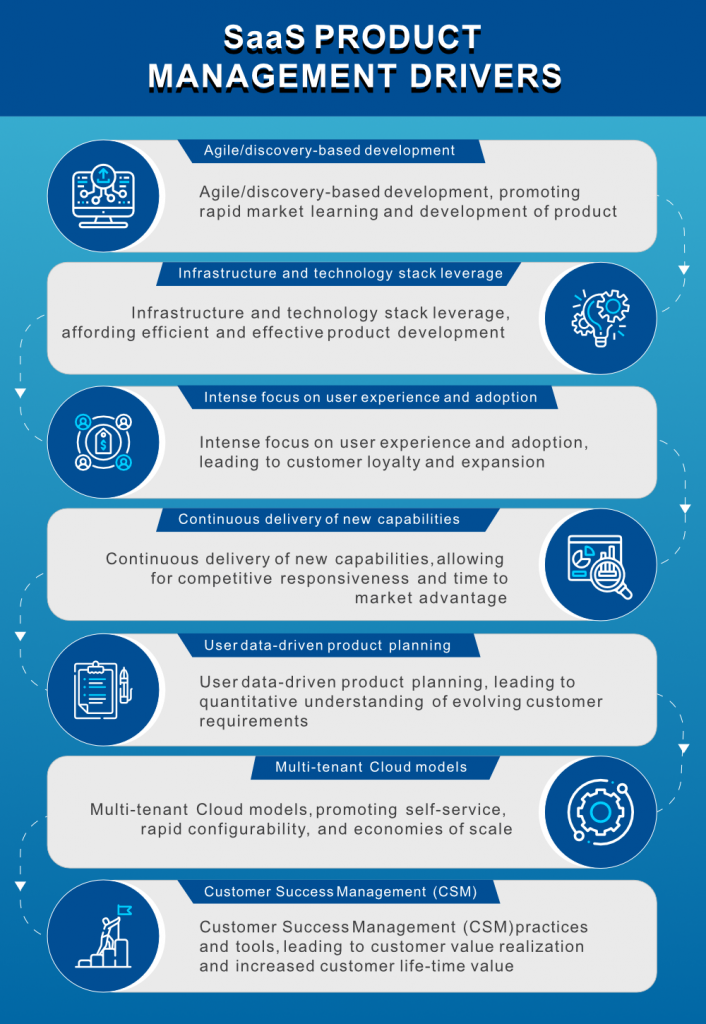
SaaS product managers uniquely understand the nature of SaaS and its implications.
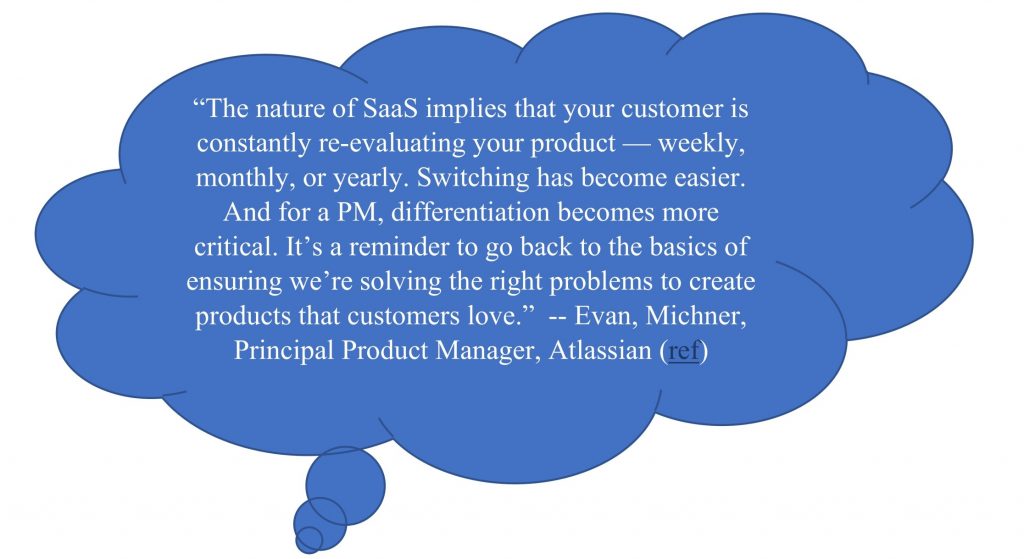
2. Overview of the Five Product Movements Model (5PMM)
The Five Product Movements Model (5PMM), depicted below, defines the key movements (product strategy, planning, development, marketing and operations) that occur over the SaaS product management life cycle (SaaS PMLC) in SaaS companies. Collectively, the 5PMM defines the range of key activities product management must be responsible for or actively involved in a successful SaaS company. The 5PMM is a product-level model (as opposed to a portfolio-level model). The 5PMM assumes the important work of establishing the broader business and organizational portfolio context (i.e., corporate-level business strategy and positioning, portfolio-level analysis, etc.) occurs outside of the 5PMM and advises the Product Strategy movement. Clearly such context influences the product management work to be done at the product level. An excellent treatment of the broader business and organizational portfolio context is offered by my colleague Geoffrey Moore in his seminal works Escape Velocity and Zone to Win.
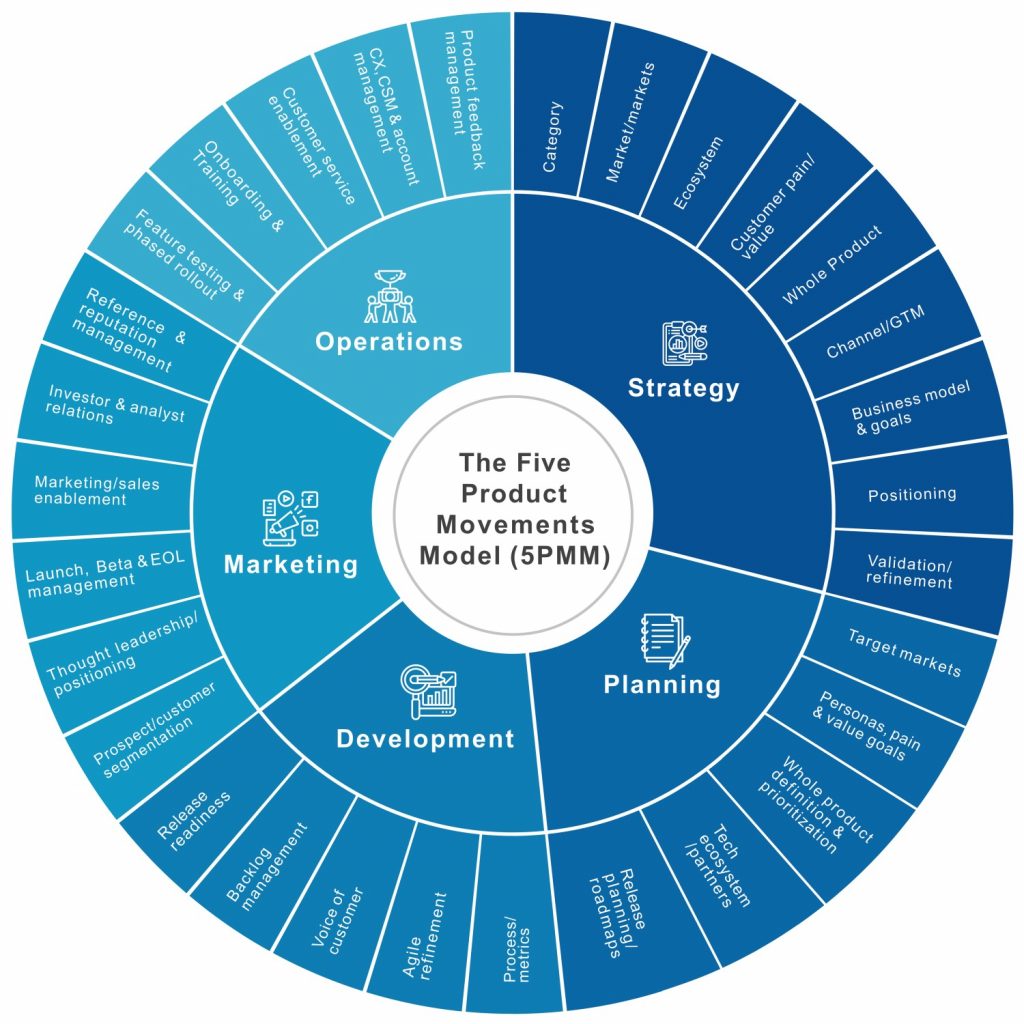
2.1 Product Strategy: Defining the Destination

Key activities of the product strategy movement include:
- Category: formation and leadership in the current and aspirational space your offer occupies in the market
- Market and markets: market and competitive analysis; target market analysis
- Ecosystem: overview of the major adjacent products that deliver value in the value stream in which your category is associated and for which integration to such products may make sense to deliver
- Customer pain points & value realization: agile discovery, definition and prioritization of prospect and customer personas, pain points, journey maps and value realization goals
- Whole product outline: high-level outline of whole product in terms of key capabilities and features needed to deliver on the pain points and customer value realization goals of customers and prospects, including the capabilities that deliver sustainable competitive advantage and their associated value proposition
- Channel & GTM model: go-to-market model (GTM) and mix of direct and channel (indirect) sales
- Business model & goals: packaging, pricing, length of term and other critical business success factors for the company; key financial/operating business model goals (revenue, profitability, market share, CAC, Gross Margin, MRR, ARR, LTV, Churn)
- Positioning: synoptic statement about category, target markets, value proposition, whole product, competition and source of sustainable competitive advantage
- Strategy validation & refinement: proof of internal and external validation of product-market fit and sustainable differentiated competitive advantage
2.2 Product Planning: Setting Milestones for the Journey

Key activities of the product planning movement include:
- Target markets: prioritized definition of target markets
- Personas, pain points & value realization: typical titles and mindset of various buyers, decision-makers, influencers and users and highlight key persona pain points and customer value realization outcomes for planned releases
- Whole product definition and prioritization: dynamically define and prioritize whole product solution in terms of prioritized functional, non-functional, service and operational capabilities, features and user stories (directly tied to the aforementioned target customer pain points and value realization goals) sufficient to drive release planning
- Technical ecosystem, partners & integrations: define high-level approach to in/out application integration and integrations required to other products in the ecosystem; in partnership with development, define key technology partnerships to develop whole product in line with market expectations, business model goals and customer value realization goals
- Release planning & roadmaps: define solution development sequence focused on delivering customer value with release frequency, release objectives/criteria and contents for upcoming releases and required capability and capacity (in partnership with development); create roadmaps
2.3 Product Development: Bringing the Whole Product to Life

Key activities of the product development movement include:
- Process/metrics: define the development process model, metrics and the role of product management in the development process and ongoing communication and coordination with internal and external stakeholders throughout the development process
- Agile Refinement: Epics and stories associated with capabilities in the planned release – as reflected in the whole product definition and release plans described above – need to be refined in expansion, clarification, data and workflow models and visualizations
- Voice of the customer: continue to bring “voice of the customer and market” to the development process to ensure product-market fit and alignment with business model and customer value realization goals
- Backlog management: dynamic management of a prioritized backlog of user stories to be completed based on market and development learnings relative to original solution development sequence and focused on delivering timely releases of customer value
- Release readiness: decision to release a product requires internal and external validation, confirmation of release objectives being met, etc.
2.4 Product Marketing: Generating Awareness and Demand

Key activities of the product marketing movement include:
- Prospect/customer segmentation: define prospect and customer segmentation for targeted product marketing
- Thought leadership & positioning: critical thought leadership related to your category and sustainable competitive advantage; positioning of your product offer versus other products within your company’s portfolio and the broader ecosystem
- Launch, Beta & EoL management: management of product launch/Beta for new product releases and end-of-life for products being retired
- Marketing & sales enablement: planning/enablement support for product marketing and campaigns and use case-driven enablement for direct and channel (indirect) sales; tracking and acting upon product marketing related metrics to improve demand generation (cost to acquire a customer, customer lifetime value, conversion rate, close rate per channel, marketing cycle length)
- Investor & industry analyst relations: support for investor relations and industry analysts’ relations in terms of awareness raising of category, product and company
- Reference & reputation management: active management of customer references and crowd-sourced product review sites and social media posts
2.5 Product Operations: Fulfilling the Promise

Key activities of the product operations movement include:
- Feature testing & phased rollout: feature testing performed before release and phased rollout of new capabilities
- Onboarding & training: automated tools and processes for provisioning, configuring, onboarding and training customers
- Customer service & support enablement: management of customer-reported problems and enhancement requests
- Customer experience, success & account management: processes, tools, metrics and actions used to ensure customers are actively using software and realizing their desired customer value goals leading to customer retention, increasing revenues and life-time value from the customer and achieving business model goals
- Product feedback management: managing feedback obtained from prospects, win/loss reports, customers, internal stakeholders, analysts, etc. and use of BI tools to inform and influence product strategy and planning
3. Summary
The 5PMM addresses the many facets of being a product manager in today’s SaaS world – both within the product management function and across the organization. It provides a number of benefits:
- Unified SaaS PMLC model: The 5PMM encapsulates the multiple roles (product strategist, product planner, product owner, product marketer, product operations) that a product manager plays into a complete and unified SaaS PMLC model, inclusive of the roles product management plays in a SaaS model (e.g., operations).
- Organizational alignment: It defines the range of product management activities across the SaaS PMLC to facilitate product managers working in the same manner with a contextual understanding of where and how their work creates value and integrates with other product stakeholders (i.e., development, marketing, operations, finance).
- Practices and tools: The 5PMM provides a holistic context for understanding the places in which the various product management practices and tools fit into the overall SaaS PMLC.
- Evaluation: The 5PMM provides a basis to evaluate current practices across the SaaS PMLC.
Finally, the nature of the product management role within the five movements will vary considerably as a function of the maturity of the product category on the Technology Adoption Life Cycle (i.e., early market, bowling alley, tornado, main street).
The four questions to ask about your SaaS product management practices are:
1. Do your product management practices consider all five product movements?
2. How mature are your product management practices across all five movements?
3. How consistently are the practices carried out across the product management team?
4. Is it time to re-think and re-tool your product management practices?
What are your thoughts and feedback on the Five Product Movements Model (5PMM)?
Do you have thoughts or opinions on what you just read? Let us know what you think by leaving a comment on LinkedIn
